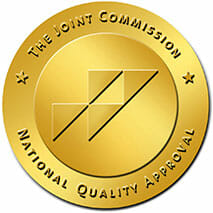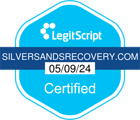The consumption of alcoholic beverages is a significant part of many cultures across the world. It’s important for consumers to understand that alcohol addiction or alcohol use disorder is not the same as binge drinking. Treatment for each may be similar, but many other factors contribute to a diagnosis of alcohol use disorder.
A recent National Survey of Drug Use and Health (NSDUH) discovered that 14.5 million people over the age of 12 had alcohol use disorder (AUD).[1] Before seeking alcohol addiction treatment, knowing what differentiates the two circumstances and what kind of help is needed in each case is helpful.
What Is Binge Drinking?
Binge drinking is one of several subcategories of excessive drinking that indicate a pattern in drinking habits. Other excessive drinking sub-categories are heavy drinking, drinking by pregnant women, or anyone under the age of 21.
The CDC defines excessive drinking based on a formula of consumption amounts and frequency. Men who consume five or more drinks during a single occasion or women who drink four or more drinks during a single occasion are partaking in excessive drinking.[2]
Heavy drinking is further defined as consuming 15 or more drinks per week for men and eight or more drinks per week for women. Though these numbers paint a picture of drinking patterns, the CDC advises that most people who drink excessively are not alcoholics or dependent on alcohol.[2]
The National Institute On Alcohol Abuse And Alcoholism polled people 18 years and older and found that 25.8% reported having engaged in binge drinking within the last month.[1] If you or someone you know could benefit from binge drinking treatment, don’t wait until the next event. Seek expert help today.
How Can You Tell If Someone Has Alcohol Use Disorder or Should Seek Alcohol Addiction Treatment?
The primary difference between alcoholism or alcohol use disorder and binge drinking largely depends on the circumstances or problems present in the user’s life.
Alcohol addiction treatment may be necessary if two or more of the following symptoms are present:[3]
- Unsuccessful at cutting back on consumption
- A person regularly drinks more than they intended
- Unconcerned with health and social problems caused by binge drinking
- Spending too much time getting, consuming, and recovering from alcohol
- Effects of alcohol are diminished, requiring them to consume even more
- Choosing to drink over other important activities
- Lack of consistency in home, work, or school obligations due to drinking habits
- They experience withdrawal symptoms when they stop
- They drink to overcome withdrawal symptoms
- They crave alcohol
- Reckless behavior
Alcoholism and alcohol use disorder are difficult diagnoses for patients, families, and friends. If these patterns seem familiar, contact the experienced and empathetic team at Silver Sands Recovery today.
What Is A “Standard Amount” of Alcohol?
Many medical professionals agree that if you don’t drink, you shouldn’t start. However, alcohol has been a part of cultural and societal interaction for centuries, and it may be difficult to turn the tide of so many generations without expert recovery care.
Every alcohol consumer has different preferences and tolerance levels regarding alcoholic beverages. It’s also important to note that not every drink is made the same consistently. Bartenders and sommeliers may not use standard measurements consistently.
The National Institute on Alcohol Abuse and Alcoholism defines a standard alcohol drink as any beverage containing 14 grams of pure alcohol. Alcoholic beverages are all crafted with varying levels of alcohol.
For example, beer is usually 5% alcohol, whereas wine is around 12%. Distilled Spirits or liquor have a much higher alcohol percentage at roughly 40%. In terms of drinks, this is roughly 12 oz of regular beer, 5 oz of wine, and 1.5 ounces of liquor. [3]
What Are The Health Risks Of Binge Drinking?
The health risks of binge drinking have a wide range of negative effects. Some of these risks harm not only the patient but also friends, family, co-workers, and even strangers.
The effects of alcohol can impair a person’s driving ability or their aptitude with equipment and machinery. Should an incident involving a motor vehicle crash or equipment failure be caused by a lack of awareness or cognition, other people in the user’s fear are put at risk.[2]
Binge drinking and alcoholism can also cause volatile behavior, including physical aggression, sexual assaults, and suicidal tendencies. Alcohol also impairs one’s judgment, frequently resulting in reckless or dangerous behavior or even STDs.[2]
If a woman is pregnant and engages in binge drinking, she is at increased risk of miscarrying or giving birth to a stillborn. The baby is also at risk of developing fetal alcohol spectrum disorders.[2]
They’re also long-term health risks that can begin to develop over time as excessive alcohol is consumed and binge drinking treatment is ignored. In addition to social, family, or career-related problems, a user may also experience high blood pressure, be at increased risk for heart disease and stroke, and multiple forms of cancer.[2]
As a patient’s condition worsens, they may also experience an inefficient or weak immune system, cognitive and memory issues, and potentially dementia. Long-term alcohol abuse can also contribute to mental health problems, including anxiety or depression.[2]
Options For Binge Drinking Recovery with Alcohol Addiction Treatment
Meeting with a trained therapist is the first step in beginning binge drinking treatment. At Silver Sands Recovery, our experienced and qualified care providers work with patients to develop holistic strategies for long-term recovery.
The best approach is an individualized plan. We help clients discover the root cause of harmful drinking behavior and understand the immediate and lasting consequences. Our programs give clients valuable and practical tools to develop consumption reduction strategies and habits.
Group and family therapy opportunities are also helpful for understanding triggers and learning new coping mechanisms to avoid future binge drinking episodes.
It can get better. It can start today. Reach out to Silver Sands Recovery for a confidential consultation and begin alcohol addiction treatment right away.
Sources:
[1] https://www.niaaa.nih.gov/publications/brochures-and-fact-sheets/alcohol-facts-and-statistics
[2]https://www.cdc.gov/alcohol/fact-sheets/alcohol-use.htm
[3] https://www.niaaa.nih.gov/alcohols-effects-health/overview-alcohol-consumption/what-standard-drink
About the author:

Lisa Waknin is the Founder and Director of Silver Sands Recovery, located in Prescott, Arizona. Lisa started Silver Sands Recovery after immersing herself in the addiction treatment world for several years to figure out what could be done differently to help her daughter and others like her to overcome addiction and stay sober. She believes in a hands-on treatment approach, which includes taking someone out of their environment, providing a 90-day program in a structured environment. During treatment, clients not only recover physically but also learn to live their life again. Lisa is a sought-after expert speaker for recovery support groups, charities, schools, communities, and companies wanting to educate themselves on the explosion of opiate and heroin abuse in our country and the best way to understand, treat, and beat it.





